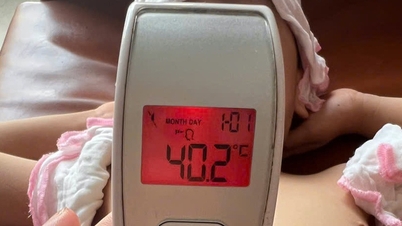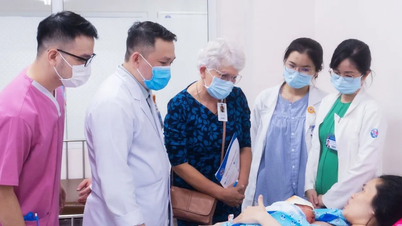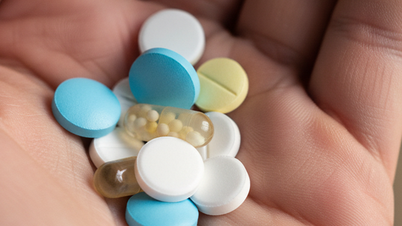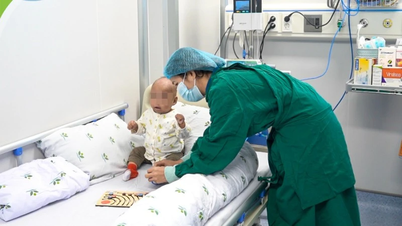Desks, elevators, telephones, and ATMs are frequently touched areas that can easily contain viruses and bacteria that cause colds.
Colds, flu, and upper respiratory infections are often transmitted directly through person-to-person contact. Other routes of transmission include touching contaminated surfaces.
To prevent disease, people should limit contact with surfaces that are likely to contain bacteria. Cleaning them regularly helps eliminate viruses and bacteria. Below are some places where pathogens easily develop.
Workplace: Office equipment or desks, especially dark, damp corners such as drawers and cabinets, create favorable conditions for pathogens to grow. Stagnant water in plant pots on the table or flower vases that have been left for a long time is also an environment for bacteria to grow.
Everyone should clean the keyboard, drawers, and corners of the workplace regularly. If you grow aquatic plants or flowers in the workplace, you should add fish to kill mosquito larvae, change the water and clean regularly to eliminate pathogens.
Elevators : Germs often cling to public surfaces in the company such as elevators, escalators, and even stairs. These surfaces should be cleaned with alcohol or a highly disinfectant solution, and elevator buttons should be cleaned twice a day.
If possible, wash your hands immediately after touching the above surfaces to avoid the virus spreading through your hands when you touch your eyes, nose, or mouth.

Stair handrails can contain many disease-causing bacteria. Photo: Van Dong
Shopping carts and baskets in supermarkets and convenience stores also have a high potential to contain pathogens, due to their use by many people and constant contact.
These items often contain raw meat, fish, and seafood, which have a high risk of accumulating e. coli and salmonella bacteria. These bacteria can live on the surface for about 2-8 hours. To ensure safety, you can wear gloves when choosing items or pushing a shopping cart. Wipe the surface before contact and disinfect your hands, wash your hands with soap immediately after returning home.
ATM : Every day, dozens or hundreds of people come into contact with ATMs. Among them, many people may be sick, carrying germs to the ATM area, buttons...
When going to an ATM and making transactions, you should wear a mask, wash your hands or use hand sanitizer immediately after using the ATM.
Mobile phones are prone to becoming a breeding ground for bacteria and viruses due to their high frequency of use. Users may touch surfaces containing viruses and then touch their phones. Going to the toilet and using the phone also poses a risk of spreading germs.
Everyone should get into the habit of wiping their phone with a disinfectant cloth at least once a day, not touching their eyes, nose or mouth, and washing their hands regularly to reduce the risk of disease.
You can wash your hands with soap, hot or cold water as you like. Remember to wash all surfaces of your hands, between your fingers, and your fingertips for at least 20 seconds. Alcohol-based hand sanitizer is a convenient backup method in case of emergency. Dry your hands with a clean towel or let them dry naturally. Wear a mask when going out, especially in public areas. You should use a medical mask once and throw it away after each use.
Anh Chi (According to WebMD )
| Readers ask questions about ear, nose and throat diseases here for doctors to answer |
Source link



![[Photo] Students of Binh Minh Primary School enjoy the full moon festival, receiving the joys of childhood](https://vphoto.vietnam.vn/thumb/1200x675/vietnam/resource/IMAGE/2025/10/3/8cf8abef22fe4471be400a818912cb85)
![[Infographic] Notable numbers after 3 months of "reorganizing the country"](https://vphoto.vietnam.vn/thumb/1200x675/vietnam/resource/IMAGE/2025/10/4/ce8bb72c722348e09e942d04f0dd9729)

![[Photo] Prime Minister Pham Minh Chinh chairs meeting to deploy overcoming consequences of storm No. 10](https://vphoto.vietnam.vn/thumb/1200x675/vietnam/resource/IMAGE/2025/10/3/544f420dcc844463898fcbef46247d16)
































































![[Infographic] Notable numbers after 3 months of "reorganizing the country"](https://vphoto.vietnam.vn/thumb/402x226/vietnam/resource/IMAGE/2025/10/4/ce8bb72c722348e09e942d04f0dd9729)




































Comment (0)